Work orders are used across a number of industries to manage the different steps and components of a project. Also known as a maintenance work order system, service orders, work request process, or work ticketing system, work orders can be created internally within a facility or issued by a customer. They can be as simple as listing a single task that needs to be completed, or they can be more granular, with each aspect of a project broken out into its own line item with subtasks, materials needed, scheduling information, and more.
Work order management best practices call for a systematized process, and a digital work order system fits the bill. Read on to learn the advantages of digital work order systems and how the right software can help streamline your field management services.
The Lifecycle of a Work Order
Even a simple work order for a single task has a process that involves several steps and multiple employees, which is why a digital system is helpful. Since a number of people may be involved in carrying out a work order, having a system that allows each of them to access the information they need from their own devices adds more visibility to the process.
Although work order life cycles can vary for different sectors and organizations, a typical life cycle looks like this:
- A work order is submitted by someone else in the organization or a customer through a pen-and-paper request, email, phone call, or work order portal.
- A dispatcher or service manager reviews the work request and approves it.
- The task is delegated to a technician so they can complete it.
- The work order is closed after the work is completed.
- An invoice is submitted for payment processing or the customer submits payment at the time of service.
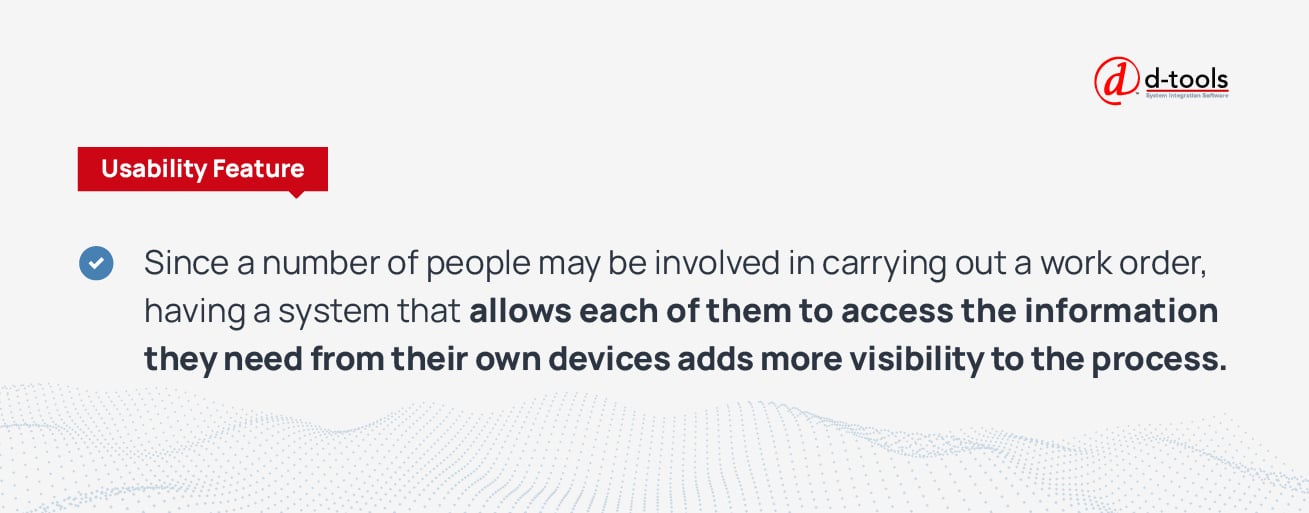
In a small organization with a handful of employees, not having a work order system in place can be an annoyance. For larger organizations, lacking a systematized work order process can create an untenable situation in which employees don’t know their own responsibilities, have no way of knowing if other employees have fulfilled their steps in the process, and aren’t sure when their work needs to be completed.
The Benefits of a Digital Work Order System
In the past, work orders were recorded on paper—often, this was a pad of paper with the words “Work Order” printed across the top. As you might imagine, this process was inefficient and cumbersome, and with paperwork being passed from one person to the next, the odds of orders being lost at some point in the process were high. If an order got lost between its initial write-up and approval, the job wouldn’t get done; if it vanishes on the way to billing after the work is complete, it creates a hassle for accounting.
While some small businesses may still work this way, today it’s more common for organizations to have a digital work order system—but that doesn’t necessarily mean it’s a good system. Many organizations have cobbled together slapdash systems using Google Forms and spreadsheets to manage work orders, but this creates its own inefficiencies, particularly when these systems must be integrated with other software for accounting, time tracking, scheduling, etc.
The risk of errors is minimized with a digital work order system designed specifically for the work order life cycle. There’s no flow of paper documents, and no need for manual updates to spreadsheets and such. Every step of the work order life cycle, from the initial receipt and approval of the order to its completion, are accounted for in such a system, and every stakeholder in the process has easy access to the digital documentation so they can see exactly what has been done, what needs to be done, and any notes about the process. Even better, all of these updates are available in real time.
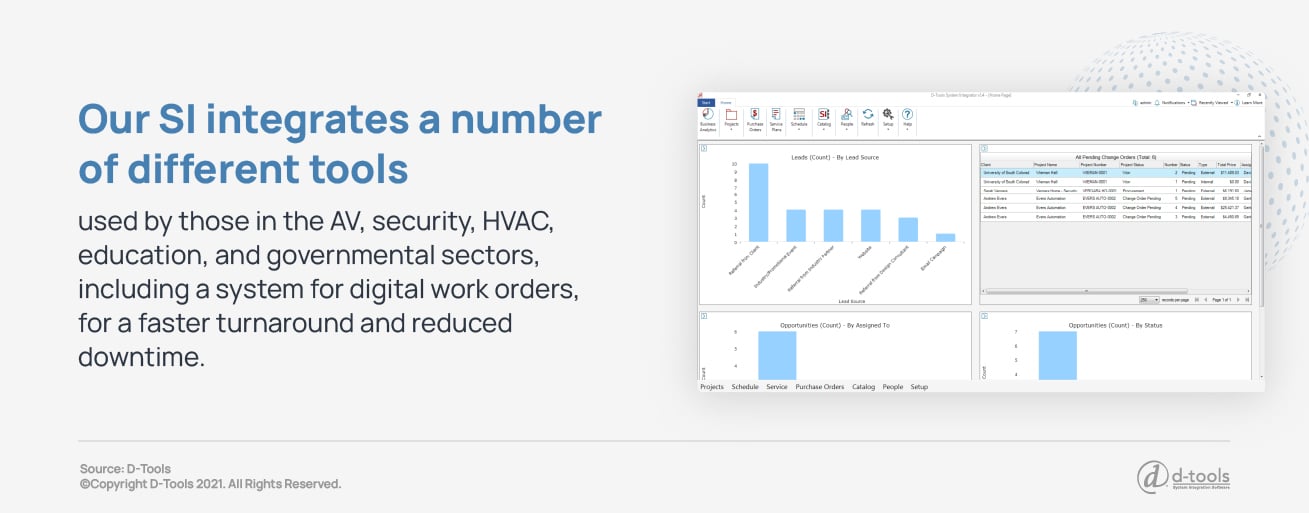
As you might guess from the name, D-Tools’ System Integrator business management software for electronic systems contractors integrates a number of different tools used by those in the AV, security, HVAC controls and building automation, higher education, and government sectors, including a system for digital work orders. The software’s work order capabilities ensure that approval, billing, invoicing, and communication all occur seamlessly for faster turnaround and reduced downtime. Following work order management best practices has never been easier.
D-Tools System Integrator Digital Work Order System
D-Tools’ industry-leading System Integrator solution was built with the needs of your industry in mind. The importance of streamlining project workflows to add efficiency cannot be overstated. Which is why SI delivers powerful project and field service management capabilities. These include:
- A Phase Summary View for subphases that includes base labor hours, cost, and price on a project
- Photos, documentation, and comments can be added to the project file in SI and linked to the work order
- Custom Fields in tasks and service orders to facilitate easier communication with field installers
- The Priority Field in service orders helps prioritize the flow of services based on clients’ urgency
- Integrated calendars allow you to see technician availability at-a-glance before assigning them service orders
- Color coding in service order grids improves visibility
- The ability to create workflow rules for a more customized digital work order process
- Automated reminders can be sent for start and end dates
How to Manage and Create Work Orders in D-Tools System Integrator
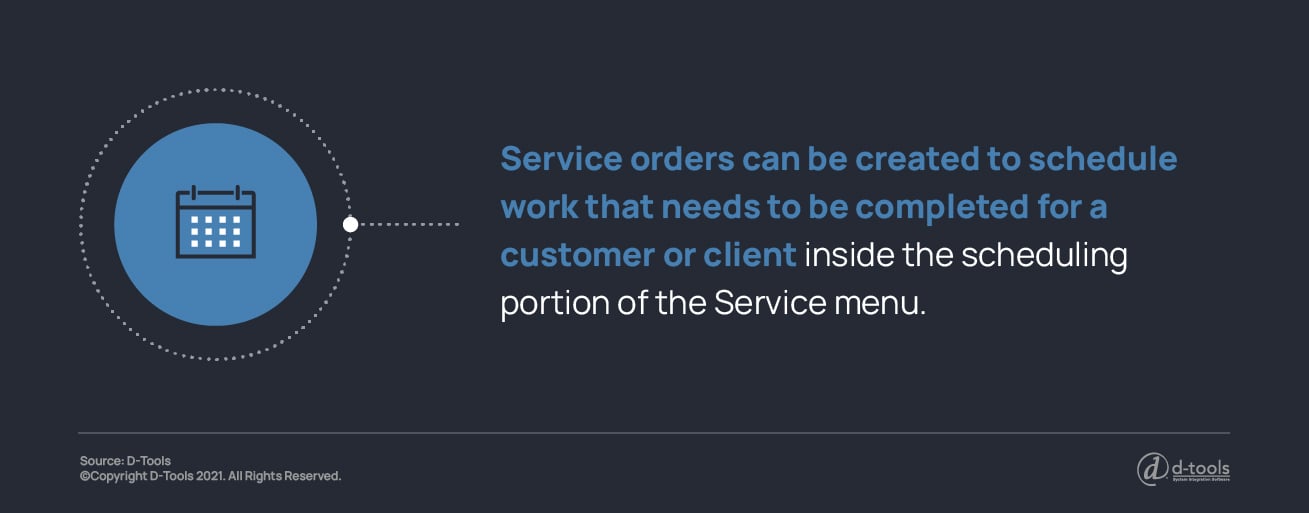
Inside the scheduling portion of the Service menu, service orders can be created to schedule work that needs to be completed for a customer or client. When creating your work order, you can also assign resources, such as a field technician or installer, to go along with any equipment that is being installed.
Setting up a Digital Work Order
Keep in mind that if you are creating a service order related to a completed project for documentation purposes only, you will want to check in the project prior to creating a service order. The items available to add to a service order will pull from the stored copy of a project from the server. If you have a project checked out to you and you add or remove items, those changes will not be available in the service order until you check in the project.
Work orders are created and managed in the Service Order Explorer. First, select the Start tab, then go to Service, and from there, go to Manage Service Orders. This will open the Service Order Explorer. Next, select New, which will open the new service order form.
Here you can complete all of the necessary fields for the digital work order you’re creating, including:
- The name of the work order
- The description of the services to be provided
- An expected date and time for beginning and ending the project
- The client name (you may select from an existing client, create a new one, or import from Outlook or QuickBooks; for an existing client, you can associate the service order with a project, but it isn't a required field)
- The primary contact (from the Contact tab)
- A billing and site address (from the Address tab; this will automatically populate with the addresses from the project if/when a project was selected)
- Labor items that are needed (select Labor in the top ribbon)
- Products from your catalog (select Products in the top ribbon)
Viewing and Managing Digital Work Orders
By default, all digital work orders will display in the Service Order Explorer. You can filter via the column filters and by client and/or project, allowing you to keep priority work orders visible at a glance. Another way to view service orders for a specific project is within the Project Explorer. When you have a project selected, click the Service Orders tab along the bottom section of the interface.
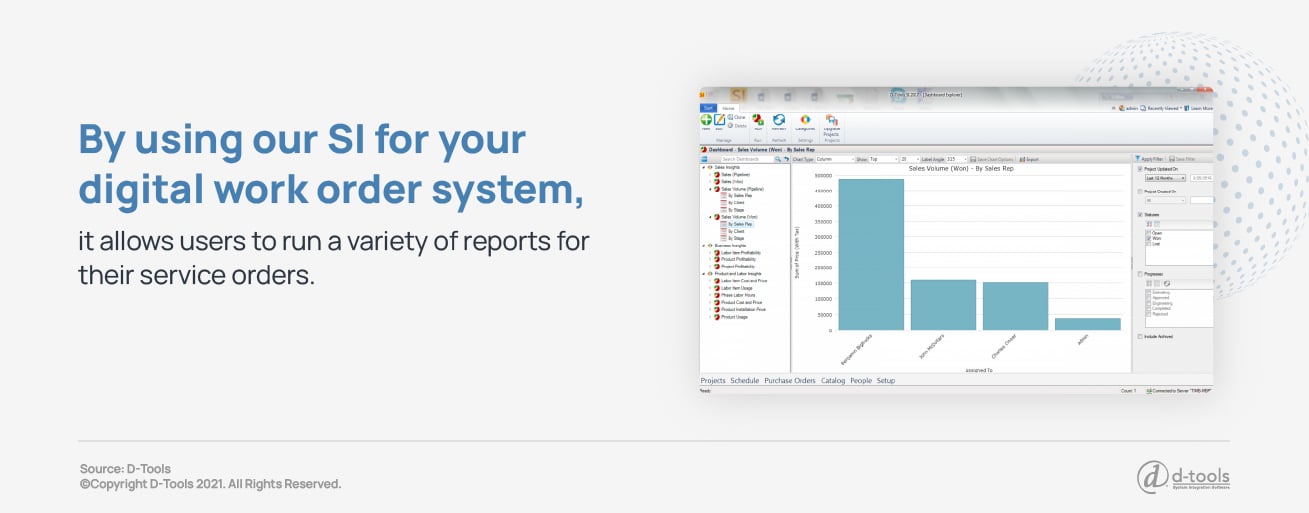
A further advantage of using D-Tools System Integrator for your digital work order system is that it allows users to run a variety of reports for their service orders. These reports can be run on a specific service order or for multiple service orders via the reports in the Service Order Explorer.
If it’s your job to dispatch technicians to carry out the tasks in service orders, you can create these assignments directly in the SI interface. In the Service Order Explorer, you’ll be able to send a service order to various calendars. You can send an email, appointment, or task through Outlook. You can also send an appointment to either Google Calendar, Outlook.com calendar, or export an ICS file.
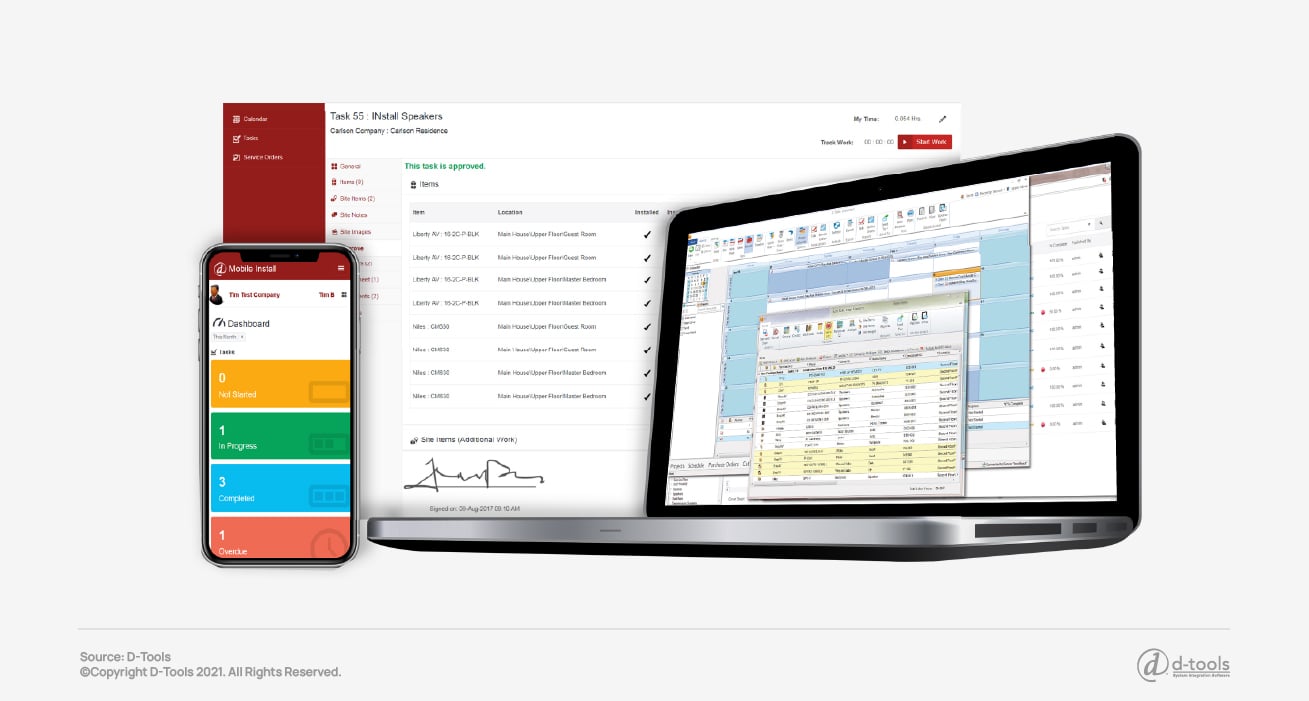
All of the digital work orders you create can be used in conjunction with Mobile Install. System Integrator (SI) Mobile Install (MI) functionality gives users the power to publish service orders to a portal that can be accessed by technicians and installers in the field from any web-enabled device. Installers and technicians can track install time and completion status, upload images, add site items, and much more. This data then synchronizes back to SI for accurate time and install tracking. For additional information on Mobile Install, please contact your account manager.
Get Started with D-Tools System Integrator
Learn how D-Tools’ software can add efficiency to your processes. Request a demo today.
Article originally published on 09/28/2020, updated on 10/29/2021





